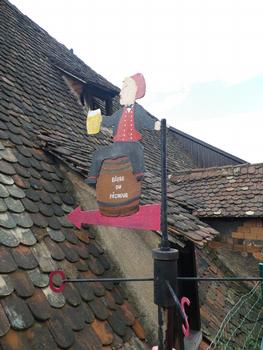featured item

quality pair of antique edwardian postal scales and weights Read more
Weathervanes
Posted by Bob Brooke on 27/04/2017
In the 18th and 19th centuries the weather governed the lives of both seafarers and farmers, thus making the weathervane more practical than ornamental. These ubiquitous objects topped many a building in the 19th century. And while there aren’t as many today, they can still be seen here and there, especially in the rural landscape.
i
Weathervanes in Early Times
The first documented weather vane honored Greek demigod Triton, the half-man, half-fish son of Poseidon. Triton's role in mythology was to still the ocean's waves, and his bronze likeness topped the Tower of the Winds, built around 48 B.C.E in Athens. The ancient Greeks believed wind had divine power, so they naturally fashioned their weather vanes after Greek gods.
Archaeological studies reveal that Viking explorers had quadrant-shaped vanes attached to their ships. Later in the century, a papal decree ordered the symbol of a rooster be placed on all church rooftops. The rooster represented Peter's denial of Christ, and acted as a reminder for the faithful to attend services.
By the 17th century, weather vanes had become a common addition to the roofs of European and English buildings. Makers also imported them to America for mounting on civic buildings and churches. As the 18th century progressed, weather vanes became an integral part of American history and architecture.
Read more at: http://theantiquesalmanac.com/weatheringthetestoftime.htm#sthash.kzeaKI7e.dpuf




